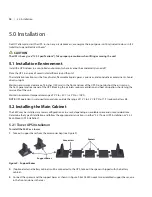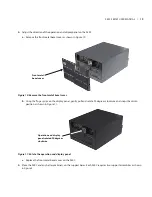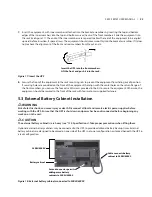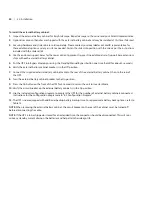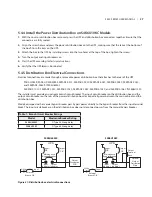
18
| 5.0 installation
5.0 installation
Do nOT attempt to start the UPS, turn on any circuit breakers, or energize the input power until instructed to do so in “8.2
initial Startup and Electrical Checks”.
!
CAUTION
The UPS is heavy (see “12.0 Specifications”). Take proper precautions when lifting or moving the unit.
5.1 Installation Environment
install the UPS indoors in a controlled environment, where it cannot be accidentally turned off.
Place the UPS in an area of unrestricted airflow around the unit.
The installation location must be free of water, flammable liquids, gases, corrosives, and conductive contaminants. Avoid
direct sunlight.
Maintain a minimum clearance of 4 inches (100 mm) in the front and rear of the UPS. Do not obstruct the air inlets on
the front panel and rear panel of the UPS. Blocking the air inlets reduces ventilation and heat dissipation, shortening the
service life of the unit.
Maintain an ambient temperature range of 0°C to +40°C (+32°F to +104°F).
NOTE:
UPS operation in sustained temperatures outside the range of 15°C to 25°C (59°F to 77°F) reduces battery life.
5.2 Installing the Main Cabinet
The S4KC may be installed as a tower configuration or in a rack, depending on available space and use considerations.
Determine the type of installation and follow the appropriate instructions in either “5.2.1 Tower UPS installation or “5.2.2
rack-Mount UPS installation”.
5.2.1 Tower UPS Installation
To install the S4KC as a tower:
1.
Take out support bases from the accessories bag (see Figure 9).
Support Bases
Spacers
Connectors
Figure 9: Support bases
2.
if optional external battery cabinets will be connected to the UPS, take out the spacers shipped with the battery
cabinet.
3.
Connect the spacers and the support bases as shown in Figure 9. Each S4KC needs two assembled support bases, one
in the front and one in the rear.















